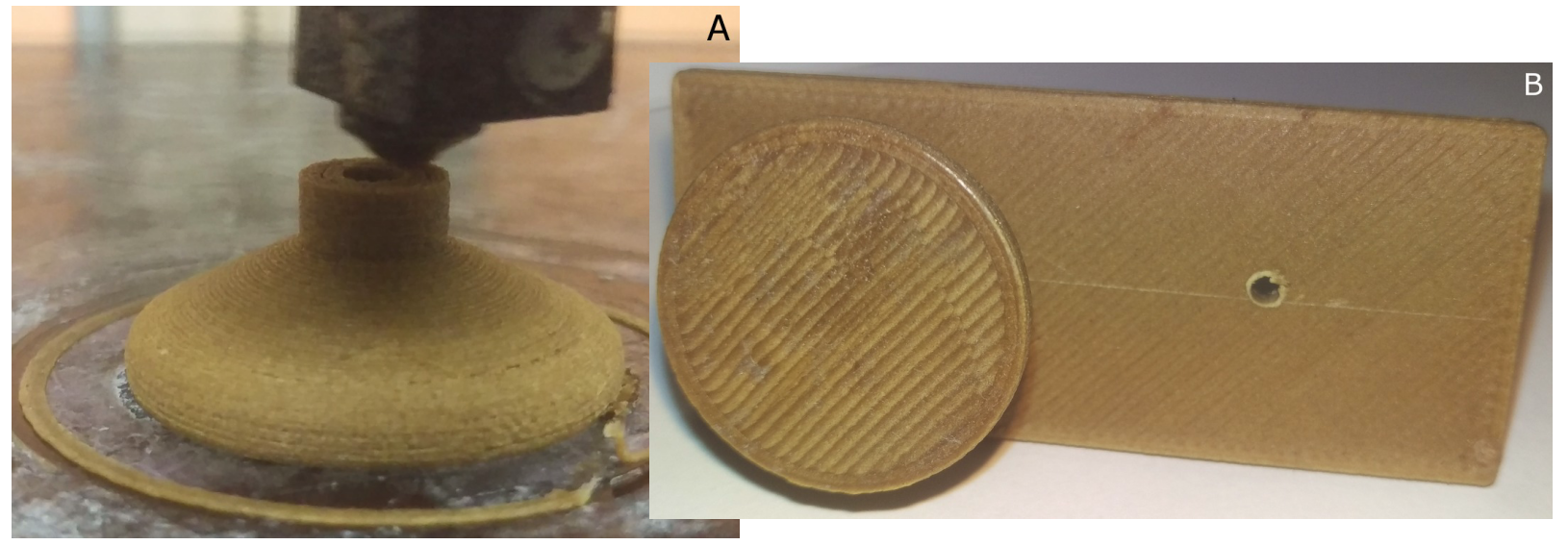Scientists at the Michigan Technology University, Houghton have successfully made 3D printable wood filament from furniture wood-waste.
The success was published in a research paper co-authored by the open-source champion Joshua Pearce. The paper explored the possibility of upcycling furniture waste into wood filament to reduce the environmental impacts of wood waste.
The wood filament was made using only open-source software and hardware.

Manufacturing wood filament from waste
According to the paper, the furniture industry in Michigan alone produces more than 150 tons of wood-waste a day.
In a four-step process, the scientists demonstrated the possibility of making 3D printing wood filament with a combination of wood-waste and PLA plastic. The mixture of these two materials is better known as wood-plastic-composite (WPC).
In the first step, wood waste was acquired from varying furniture manufacturing companies in Michigan. The waste included solid slabs and sawdust of MDF, LDF, and melamine.
These solid slabs and sawdust were reduced to micro-scale level for the preparation of WPC filament. The waste material was hammer milled, ground in a wood chipper and sifted using a vibratory de-airing device, which used an 80-micron mesh sifter.
By the end of this process, the wood waste was in a powder state with a granular constituency of grain flour. The material was now referred to as “wood-waste powder.”
This whole process was necessary to make the wood mixable with PLA.
In the next step, PLA was prepared to mix with the wood-waste powder. PLA pellets were heated at 210C until they became stir-able. The wood powder was added to the melted PLA mix with varying wood to PLA weight percentage (wt%) between 10wt%-40wt% wood-waste powder.
Once the desired mix amount and quality was achieved the material was rested to cool down.
The solidified material was again put into the wood chipper to prepare for the open-source recyclebot, a plastic extruder for filament making.
The filament fabricated was 1.65mm, thinner in diameter than the standard 3D filament available in the market, i.e. 1.75mm.

3D printing with open-source wood filament
The wood filament was tested by fabricating various items, such as a wooden cube, a doorknob, and a drawer handle. Due to the mechanical properties of the wood filament, adjustments were made to the Delta RepRap and Re:3D Gigabot v. GB2 3D printers used in the study. The alterations included modifying the extruder and controlling the speed of the print.
Printing wood on an ideal temperature is also an important factor as high temperature can char the wood and clog the nozzle. In this case the wood filament was printed at 185C.
The researchers showed that it was practical to make wood filament using furniture wood waste. However, they raised significant points for future study. These included the economic and environmental impacts, details of mechanical properties, the possibility of industrial-scale production.
The paper concluded: “this study has demonstrated a technically viable methodology of upcycling furniture wood waste into usable 3-D printable parts for the furniture industry. By mixing PLA pellets and recycled wood waste material filament was produced with a diameter size of 1.65±0.10 mm and used to print a small variety of test parts. This method while developed in the lab may be scaled up to meet industry needs as the process steps are uncomplicated. Small batches of 40wt% wood were created, but showed reduced repeatability, while batches of 30wt% wood showed the most promise with ease of use.”
The research paper discussed in this article is titled Wood Furniture Waste-Based Recycled 3-D Printing Filament. It is co-authored by Adam M. Pringle, Mark Rudnicki, and Joshua Pearce.
For more news on the latest development in 3D printing, subscribe to our 3D printing newsletter. Also join us on Facebook and Twitter.
You can also get a job in the industry by visiting our 3D Printing Jobs.
Featured image shows the wood filament produced in the study. Image via Forest Products Society

